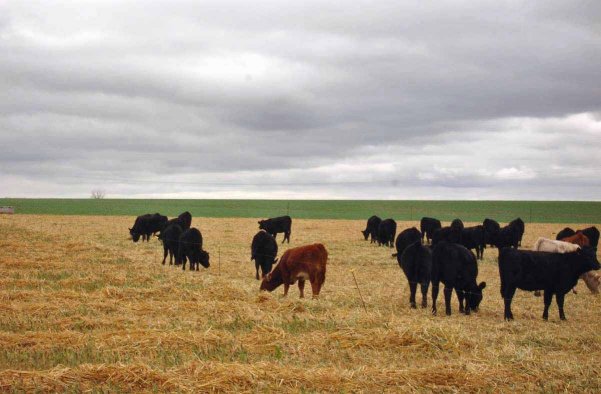
By Aaron Berger, UNL Extension Educator
Advantages to Windrow Grazing:
Harvested feed costs can be one of the largest expenses to cattle producers. Windrow grazing, sometimes called swath grazing, is a management practice that can significantly reduce harvesting and feeding costs. Swathing the crop and leaving the windrows in the field eliminates the costs of baling and hauling bales off the field while reducing labor and equipment costs associated with feeding. Grazing windrows in the field also returns some nutrients and organic matter from consumed forage back to the soil where the crop was grown.
Precipitation Patterns Support Windrow Grazing in Central and Western Nebraska
In Nebraska, 75-80 percent of seasonal precipitation falls in the six-month period from April through September. Only 20-25 percent of precipitation falls from October through March. This seasonality of precipitation allows for swathing forage crops in early fall and preserving them through the fall and winter with minimal deterioration in quality due to weathering. Across Nebraska, the average amount of precipitation increases from west to east. Greater average precipitation in eastern Nebraska does increase the risk of windrow deterioration compared to drier conditions in western and central Nebraska. Snowfall from October through March can be quite variable; however, extended periods when snow cover would prevent windrow grazing are limited.
For more information please see the UNL NebGuide Windrow Grazing: http://ianrpubs.unl.edu/live/g1616/build/g1616.pdf